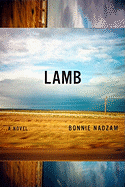
| Publisher: | Other Press | |
| Genre: | Psychological, Fiction, Coming of Age, Literary | |
| ISBN: | 9781590514375 | |
| Pub Date: | September 2011 | |
| Price: | $15.95 |
| Fiction |
by Bonnie Nadzam
Lamb is a tale told from the depths of its title character's self-centered loneliness. In his 54 years, David Lamb has wanted for little and suffered less. So when his marriage crumbles and his father dies, Lamb copes by disappearing from Chicago to his cabin out west. Instead of taking the time for some much-needed soul-searching, however, Lamb takes along Tommie, an unexceptional 11-year-old girl he meets in a Lombard parking lot.
But Lamb is no titillating crime drama. With the reflexive self-deception born of unexamined privilege, Lamb picks up Tommie because he needs to believe that he can, somehow, save her--that he can waltz into the life of a girl who will amount to nothing and give her the benefit of a Rocky Mountain vacation, a yellow sweater, a slice of a world she's never seen. What Lamb doesn't realize, however, is that he cannot give Tommie the honest and intimate friendship she needs without first facing the demons--privileged as they are--that lurk in his own past.
Lamb is difficult to sympathize with, which can make the book dislikable at times, but Nadzam's genius is in creating a character who is as compelling as he is tiresome. Lamb has sparse settings and very little plot, but these don't feel like losses so much as discretion. Everything that matters happens between Lamb and Tommie, and in forging this relationship, Nadzam has done well indeed. --Dani Alexis Ryskamp, blogger at Intractable Bibliophilia
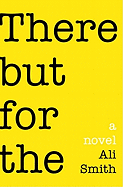
| Publisher: | Pantheon | |
| Genre: | Urban Life, Fiction, Family Life, Literary | |
| ISBN: | 9780375424090 | |
| Pub Date: | September 2011 | |
| Price: | $25 |
| Fiction |
by Ali Smith
Far beyond merely clever, Ali Smith (The Accidental; Hotel World) has devised a wise and punny, witty story of people caroming off one another like billiard balls on a table. Their connections, and lack thereof, make up the import of this quirky, modernist tale.
Once a year, Genevieve and Eric Lee give an "alternative" annual dinner party, to which they "invite people who were a bit different from the people they usually saw, as well as friends they saw all the time." Maybe a Muslim, a Jew or a Palestinian--a foray into diversity. This year a friend of a friend, Mark Palmer, brings Miles Garth with him. The title of the first section is "There," followed by "was once a man who, one night between the main course and the sweet at a dinner party, went upstairs and locked himself in one of the bedrooms of the house of the people who were giving the dinner party." That man is Miles. And thereby hangs the tale.
Suspend disbelief that anyone would allow this situation to continue for three months and enjoy the ride through words, concepts, figures of speech and the idiosyncrasies, rhyming, singing, foibles, eccentricities and downright oddments of all the characters. The story unfolds through the eyes of four people who have known, ever so slightly, Miles Garth. Who he is remains ambiguous as we read the account of Anna, an age-mate who knew him perhaps 30 years ago, briefly. Oh, but then she remembers another, more telling encounter.
Next in the recounting is Mark Palmer, a gay man, who meets Miles and, on a lark, invites him to this dinner he doesn't want to attend. Of course, we learn more about Mark then we do about Miles, which is the way of things in this book. Miles is a memory catalyst, a prism through which to focus certain times, people and events. May Young, an octogenarian, has the most poignant tale to tell and also gives the reader insight into Miles. Precocious 10-year-old Brooke Bayoude is a constant through several narrations, and the only person who connects with Miles in any meaningful way.
Ali Smith is probably some kind of genius--and way entertaining in the bargain. --Valerie Ryan, Cannon Beach Book Company, Ore.
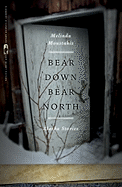
| Publisher: | University of Georgia Press | |
| Genre: | Fiction, Short Stories (single author) | |
| ISBN: | 9780820338934 | |
| Pub Date: | September 2011 | |
| Price: | $24.95 |
| Fiction |
by Melinda Moustakis
There are fish stories... and then there are fishing stories. In this stellar first collection by Alaskan-born Melinda Moustakis we get a little of both. The linked stories of Bear Down, Bear North (winner of the 2010 Flannery O'Connor Award for Short Fiction) follow the lives of three generations of homesteaders in the raw and rugged landscape of Alaska.
Whether she is describing what seems like a preposterous tale of a teenage girl mushing a dogsled through a blizzard in search of a lost Malamute or a brother and sister landing a 60-pound chrome salmon on the Kenai River or still more siblings rescuing a frozen eaglet trapped in the stinking muck under the hole of an outhouse, Moustakis crafts memorable characters with the raunchy dialogue of those who must grow up fast in the wilderness--"bear down"--or slink off to "the lower 48 in places like Nashville and Omaha."
Moustakis's stories are rich in local lore--the hospital lobby holds a dressmaker's manikin pierced by dangling fishing lures in the body locations where they were removed from patients; where the "Mathew brothers, called Doormat and Hazmat,... backtroll for kings... tossing back a few beers, waiting for the big one to hit"; and where, down at Good Time Charlie's, the regulars "all have stories full of funny accidents and slips and remember-whens and they laugh about it all, but their hands tell a darker truth."
That darkness comes long in Alaska: "It's, as Jack says, F***ing February, when everyone goes crazy and shoots themselves in the head." --Bruce Jacobs
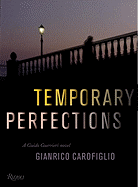
| Publisher: | Rizzoli | |
| Genre: | Fiction, Police Procedural, Mystery & Detective | |
| ISBN: | 9780847836307 | |
| Pub Date: | September 2011 | |
| Price: | $24.95 |
| Mystery & Thriller |
by Gianrico Carofiglio
Criminal defense attorney Guido Guerrieri makes a welcome return in this fourth novel in Gianrico Carofiglio's series set in Bari, on the Adriatic coast of southern Italy. Sardonic, ironic and laconic, Guerrieri is good company when he isn't busy. Since people are still getting into trouble, though, he keeps his nose to the grindstone as he strives to represent his clients well.
Manuela Ferraro has disappeared, and her parents are distraught that the Carabinieri are closing the case on her. They ask Guerrieri to help. Years of criminal defense practice come into play as Guerrieri interviews the Carabinieri, the prosecutor who has been handed the case and Manuela's friends. Fans of legal thrillers will be fascinated by his preferred methods and will truly believe and accept that his best friend is literally a punching bag (nicknamed affectionately Mister Bag) to whom he confesses all. The punching bag takes a beating, can keep secrets and never criticizes, making their relationship the most beautiful one in his life.
Guerrieri conducts a series of interviews that seem not to add much to the facts of the case, yet certain discrepancies nag at Guerrieri's inner prosecutor. Guerrieri shakes up one person by stating, "No one ever tells the whole truth, especially when they're talking about themselves," and flushes out more than he had hoped for. Persistence in pursuing hunches is key to answering the questions about Manuela Ferraro's disappearance, and finding those answers, Guerrieri tells Mister Bag, is all the proof he needs that "There are times when it is indispensable to do things the right way." --John McFarland, author
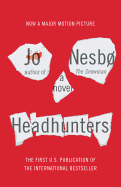
| Publisher: | Vintage | |
| Genre: | Crime, Suspense, Fiction, Thrillers | |
| ISBN: | 9780307948687 | |
| Pub Date: | September 2011 | |
| Price: | $14.95 |
| Starred | Mystery & Thriller |
by Jo Nesbo, trans. by Don Bartlett
Norwegian mystery writer Jo Nesbo's latest novel, The Headhunters, is a fast-paced thriller with enough twists to make your head spin and your hand flip back the pages to find what you missed.
Roger Brown is the king of his heap. A headhunter who grills his corporate clients via FBI interrogation tactics, he always, always places his man. But the yin of his professional success is matched by the yang of his personal insecurity. Brown is a short man who has married above himself, literally. When the financial pressures of his marriage mount, he seeks extralegal funds through art theft, and catapults head on into battle with a hunter far more dangerous than himself.
Although not as widely read, Nesbo's Harry Hole mystery series shares accolades on par with fellow Scandinavian writers Stieg Larsson and Henning Mankell. But don't bring the same expectations of moral depth and serious theme to this novel. In Headhunters, the moral compass that guides Hole is absent and there are few similarities between the protagonist of this novel and the crusading Blomqvist/Salander duo or the melancholic Inspector Wallander. Brown has the scruples of Tom Ripley and the ego of Gordon Gekko. If you grow to like him at all, it's solely because the rest of the characters are even more revolting. But this book is purely about survival. With suspense that makes you sweat bullets, it will keep you guessing until the very last page and don't be too surprised if you find yourself rooting for Roger along the way. --Tom Lavoie, former publisher
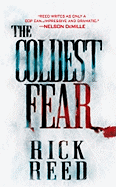
| Publisher: | Pinnacle Books | |
| Genre: | Fiction, Thrillers | |
| ISBN: | 9780786024841 | |
| Pub Date: | September 2011 | |
| Price: | $7.99 |
| Mystery & Thriller |
by Rick Reed
Rick Reed (author of the true crime Blood Trail) brings back Detective Jack Murphy from his first novel, The Cruelest Cut, in this suspenseful ride. Most of a woman's body is found mutilated in a bathtub at the Marriott in Evansville, Ind.; mere hours later, Jack is looking at the woman's right hand, arranged alongside the similarly abused body of a young mother in the projects. The bodies stack up quickly as Jack and his partner struggle to with the investigation. A local newspaper reporter scoops them at every turn, and his source just might be their serial killer. The investigators are taken to a small town with a two-man police department, and then an FBI profiler is brought in, as the case quickly grows bigger and bigger and spans jurisdictions.
Reed, a former police detective, brings his professional expertise to this thriller in which the vantage point shifts between Jack's criminal investigation and the perspective of the killer, providing a distinctive reading experience. The murderer remains nameless, but we get glimpses into what drives him and what makes him hesitate. When his identity is finally revealed, the shock is not lessened, but the tale gets an interesting twist from the shifting viewpoint.
Reed's second crime thriller delivers with fast-paced suspense, twists and turns, the humor of several witty detectives and that rarity of fiction, a likable FBI agent. Gruesome serial killings are balanced by banter, the sweet if harried relationship between Jack and his parole officer girlfriend and an ending with a note of hope. --Julia Jenkins, librarian and blogger at pages of julia
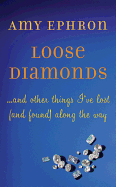
| Publisher: | Morrow | |
| Genre: | General, Biography & Autobiography | |
| ISBN: | 9780061958748 | |
| Pub Date: | September 2011 | |
| Price: | $19.99 |
| Biography & Memoir |
by Amy Ephron
When Amy Ephron's jewelry collection was stolen from her Los Angeles home, she grieved its loss twice--once for the tangible objects themselves, once for the memories. Each piece was a touchstone of a former time--the years she spent struggling to make a living as a writer, the birth of her second child, the wedding bands from her first marriage. Even if she hadn't worn them in years, they gave her a feeling of security. Then suddenly, they were gone.
Turning her collector's eye to her memories, novelist Ephron (One Sunday Morning; A Cup of Tea) pulls out a handful of anecdotes to examine--some she relates with a fond but clear-eyed nostalgia (where her writing is strongest), some with a determined cynicism (where it falters). Each essay, like a bracelet or pair of earrings, contains a memory--perhaps untouched for years, but still an important part of the collection. Like her jewelry, some pieces have more inherent and sentimental value than others; her reflections on life with her mother and her children are far superior to her experiences as a "psychic" or tales of decadence in 1980s Los Angeles, where her friends bought champagne by the case.
Underneath Ephron's biting wit and cavalier attitude lie a deep love for family and a fondness for objects and places that bring back memories such as egg cups, her Filofax and Saks Fifth Avenue. Like the loose diamonds of the title, these essays are a little scattered, but taken together, they sparkle. --Katie Noah Gibson, blogger at Cakes, Tea and Dreams
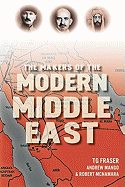
| Publisher: | Haus Biooks/Consortium | |
| Genre: | General, History, Military, World War I, Middle East | |
| ISBN: | 9781906598952 | |
| Pub Date: | September 2011 | |
| Price: | $19.95 |
| History |
by Robert McNamara, Andrew Mango, Tom Fraser
In The Makers of the Modern Middle East, historians T.G. Fraser, Andrew Mango and Robert McNamara tell the story of how today's Middle East was created from the remains of the Ottoman Empire during the peace negotiations at the end of the First World War.
The future of the Middle East was a side issue in the Paris peace talks, which an American diplomat described as "the great loot of the war." The Allies came to the table prepared to divide the region among themselves. France had its eye on Syria. Britain was concerned with securing the oilfields of modern Iraq and the route to India. Greece and Italy wanted pieces of Ottoman Europe.
The Allies weren't the only powers that had an interest in the future of the region. Prince Feisal, who led the Arab Revolt against the Ottoman Empire with British aid, hoped to build an Arab kingdom based on Syria and Palestine. Dr. Chaim Weizmann had laid the groundwork for British support of a Jewish National Home in Palestine. Mustafa Kemal, later known as Ataturk, created the modern, secular Turkish republic against Allied opposition.
Fraser and his co-authors weave the details of competing territorial claims, conflicting political agreements, ignored reports and colorful characters into a narrative as intricate as an Oriental rug, with a warp of Allied imperial ambitions and a weft of the emerging Arab nationalism, Turkish nationalism and Zionism. --Pamela Toler, blogging at History in the Margins

| Publisher: | Milkweed Editions | |
| Genre: | General, Environmental Conservation & Protection, Environmental Science, Science, Nature | |
| ISBN: | 9781571313331 | |
| Pub Date: | September 2011 | |
| Price: | $24 |
| Nature & Environment |
by David Gessner
Nature author David Gessner (My Green Manifesto) didn't plan to write about the 2010 oil spill in the Gulf of Mexico, but when he heard the Gulf called a "national sacrifice zone," Gessner had to know who and what had been sacrificed. He traveled the Gulf states in search of the story beyond "the oiled pelican": the perception of the spill as a finite crisis, solved by dispersants and a capped well.
With a journalist's attention to detail and an engaging conversational style, Gessner offers readers a walk along the stained but beautiful Gulf and the chance to hear stories and fears of the hardworking Americans BP chairman Carl-Henric Svanberg called "the small people." Whether he's speaking of human or dolphin culture, Gessner's passion and eloquence is irresistible as he explains that the idea of working with nature is not a political agenda but a practical ability our species is losing. Equally adept at communicating the wonders of the ocean and the far-reaching consequences of destroying a single habitat, Gessner at times paints a bleak picture but also remains hopeful that the aspects of human nature that led us to this pass will be the very aspects that save us in the long run.
If you read only one book about the Deepwater Horizon oil spill this year, it should be this one. If you plan not to read any books about it, make an exception for this blunt, funny, eye-opening quest to find the real stories behind the Gulf crisis. --Jaclyn Fulwood, graduate assistant, University of Oklahoma Libraries
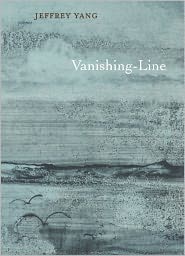
| Publisher: | Graywolf Press | |
| Genre: | ||
| ISBN: | 9781555975944 | |
| Pub Date: | September 2011 | |
| Price: | $15 |
| Poetry |
by Jeffrey Yang
The poems in this book are fairly difficult, allusive, language-driven, nonnarrative works that try to create an idea or feeling or image in your mind from a rich world of words, juxtapositions and snippets of history. Yang is something of a pointillist--he uses words as small dots and dashes, pure color, applied to form a pattern that gradually reveals something to the reader: "wynde-hidden words/ there the island, there the sea/ / floating island mass of the mind/ vanishing beyond the vanishing-line." At times his language play harkens back to Gerard Manley Hopkins: "shield sheds shard/ green-glazed, lost whole."
Yang's first collection of poetry, An Aquarium, was very well received. His position as poetry editor at New Directions and his work as a translator certainly help him in his quest for new and original ways to create poetry. This collection pushes his technique further. Here are a mere seven poems, largely about history and language itself. The final poem, some 50 pages long, deals with the poet walking around a village on eastern Long Island named Yennecott by the Native Americans. The poem has some beautiful, descriptive passages, but it also has grisly descriptions amid a searing indictment of the Europeans' terrible mistreatment of the Indians. --Tom Lavoie, former publisher
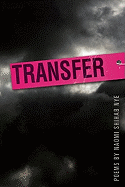
| Publisher: | BOA Editions/Consortium | |
| Genre: | General, American, Poetry | |
| ISBN: | 9781934414644 | |
| Pub Date: | September 2011 | |
| Price: | $23 |
| Poetry |
by Naomi Shihab Nye
Poetry is language, rhythm and song. In the voice of Naomi Shihab Nye, prolific Texas poet and National Book Award finalist (19 Varieties of Gazelle), poetry is also a way to connect generations and cross borders. Her newest collection, Transfer, generously pays homage to her Palestinian heritage; her much-loved father; her late, long-lived grandmother; the streets of San Antonio; and the little things in life that can lift us up or let us down.
For Nye, language is like the transfer tickets her father saved from his many travels. She finds them after his death, stashed in a drawer--not only international luggage tags but also the simple city bus chits needed "Because this bus/ only goes so far, then we need another one./ ...We need a/ different direction bus." Language is where she goes when there is nowhere else to go: "Adjectives polished and combed./ How beautiful they were,/ in their same suits, a crowd of men you knew/ would help you if you were falling...."
Transfer exemplifies Nye's broad stylistic reach and explores her frustrations with the politics of terrorism and war--but only in the language of the personal. Her poetry accepts our weaknesses. "So, the years go by, we find our doors and windows./ Some are always open, some never were./ Because we are stubborn, we love/ the ones that won't open most." These new poems gently pry open a few more windows in the world. --Bruce Jacobs, founding partner, Watermark Books & Cafe, Wichita, Kan.
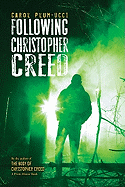
| Publisher: | Harcourt Children's Books | |
| Genre: | Boys & Men, Law & Crime, Mysteries, Espionage, & Detective Stories, Juvenile Fiction | |
| ISBN: | 9780152047597 | |
| Pub Date: | September 2011 | |
| Price: | $16.99 |
| Children's & Young Adult |
by Carol Plum-Ucci
In Carol Plum-Ucci's debut novel, The Body of Christopher Creed, high school nerd Christopher Creed disappeared. This companion novel takes place four years later, when a body is discovered in Chris's hometown of Steepleton, Ind. College reporter Mike Mavic heads to the site to see if there is a connection between the body and Chris, and to see how the town has handled Chris's disappearance.
Torey Adams, introduced in The Body of Christopher Creed, established a blog after Chris's disappearance as a way of coping. When she posts an entry about the discovery of a body, Mike is drawn to Steepleton. He becomes embedded in the story after coming face to face with Chris's younger brother, Justin, a bipolar teen just out of rehab. Justin believes that Chris is still alive and that he can bring Chris back to Steepleton with the power of his thoughts. As Justin's mental stability hangs in the balance, it becomes clear that the mystery of Christopher Creed is far from over.
Though this is a companion to The Body of Christopher Creed, it stands on its own as a chilling and wonderful mystery. Mike's recollections of what he read on Torey's blog ensure that readers will quickly and easily catch up with the events of the first book without the story slowing down. The characters may not all be likable, but all are believable. In telling the story through Mike's eyes, Plum-Ucci gives readers an outsider's perspective on a town that hasn't let go of the past and offers what may be one of the most surprising endings imaginable. --Kyla Paterno, retail coordinator and blogger, Garfield Book Company

| Publisher: | Scholastic | |
| Genre: | Juvenile Fiction, Historical, United States - 20th Century | |
| ISBN: | 9780545297059 | |
| Pub Date: | September 2011 | |
| Price: | $12.99 |
| Children's & Young Adult |
by Andrea Davis Pinkney
As the author of engaging nonfiction and historical fiction for young people, Andrea Davis Pinkney (Sit-In) seems like a natural choice to pen a Dear America novel, and this stands out as one of the finest in the series.
With the Might of Angels takes readers to the heart of the battle over school integration in the fictional town of Hadley, Va. (inspired by the integration of a school on the Fort Myer military base). Seventh-grader Dawnie's diary entries begin May 18, 1954, the day after Brown v. Board of Education made public school segregation illegal, and cover the events of one year. Dawnie is determined to become a doctor, though she has "never seen a colored doctor." She calls her plan "Dawnie Rae Johnson's Intention." When she is chosen, as one of the three brightest students at her school, to attend the town's previously all-white school, Dawnie is thrilled that she'll have access to a science lab. She ends up integrating the school alone, however, when the parents of the other two students chosen are too stubborn or afraid to send their children. In the face of discrimination from her classmates and teachers, Dawnie Rae Johnson's Intention grows ever stronger, and her courage is inspiring and convincing.
Historical figures such as Martin Luther King, Jr. make cameo appearances, and Dawnie composes letters to her idol, Brooklyn Dodgers star Jackie Robinson. Excellent historical and author notes provide further insight, as does an epilogue and period photographs. This is historical fiction for young readers at its best, with a brave and unforgettable narrator at its center. --Molly McLeod, middle school librarian

| Publisher: | Little, Brown | |
| Genre: | Girls & Women, Horror & Ghost Stories, Mysteries, Espionage, & Detective Stories, Fantasy & Magic, Juvenile Fiction | |
| ISBN: | 9780316125727 | |
| Pub Date: | September 2011 | |
| Price: | $17.99 |
| Children's & Young Adult |
by Karen Healey
"This is what evil looks like... ordinary people doing terrible things." Evil seethes beneath the surface of the impossibly beautiful, improbably prosperous New Zealand vacation hamlet of Summerton, cloaked from the tourists and suspected by but a few misfit residents. The fractures appear only when three teens compare their suspicions after they each lose a beloved older brother to suicide. Hero Sione joins 17-year-old Keri and Janna in a quest and helps them rekindle a lost childhood friendship. The narrative shifts among their three perspectives, and their relentless investigation elevates the plot from a suspected murder mystery to gritty black fantasy. Supernatural forces appear to be responsible for the suicides, which might really be murders.
Karen Healey (Guardian of the Dead) taps into her native New Zealand for the multicultural cast and setting of her second novel, and the exotic locales and cultures imbue the novel with depth and intrigue. For readers unfamiliar with cultural references to the Maori, the native New Zealanders, and Samoans, she provides a glossary in the back. Healey seamlessly weaves together several psychological subplots that address the impact of bullying on those with a different cultural background, sexual orientation or spiritual practice. This fresh cultural take on the young adult paranormal quest will shatter your preconceptions of the genre. --Jessica Bushore, public librarian.